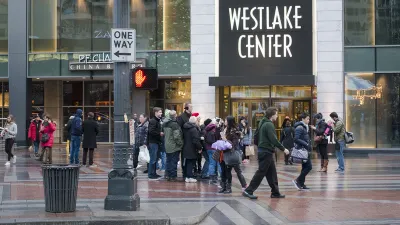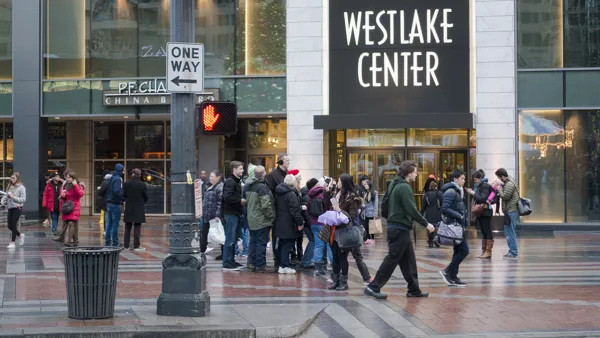A status update of the Seattle Pedestrian Master Plan leaves a writer wondering if the backlog of pedestrian infrastructure maintenance will grow while only a few planned projects get built.

Ryan Packer writes a review of the current status of the Pedestrian Master Plan (PMP) adopted by the city of Seattle in 2009, "to determine how to approach the issue of maintaining, improving, and expanding the pedestrian network…" According to Packer, the key takeaway offered by the plan is a statement of prioritization: which pedestrian improvements get done first.
Along those lines, the plan distinguishes a Priority Investment Network (PIN), which includes "adjacency to the priority transit network, close walksheds to schools, streets where sidewalks are currently missing, and streets where there are high rates of collisions involving pedestrians."
It's the question of funding that makes Packer question the real ability of the plan to prioritize anything at all. Many of the projects in the PMP relies on the Move Seattle levy. As Packer shows, referencing the PMP directly, "the levy would fund 250 blocks of new sidewalks, and the identified need that only include arterials within the priority network is more than double that."
These facts lead Packer to the conclusion that "[i]t’s conceivable that in five or six years, when the time comes to redevelop the Pedestrian Master Plan, that the need will grow even further to the degree that the priority investment network needs a further subcategory in order to prioritize investments in it." Moreover, Packer wonders about the sincerity of city officials claiming to target a Vision Zero agenda of eliminating traffic fatalities by 2030 "when our most robust transportation levy in decades only provides for spot improvements on 12 to 15 corridors…"
FULL STORY: Pedestrian Master Plan Update

Analysis: Cybertruck Fatality Rate Far Exceeds That of Ford Pinto
The Tesla Cybertruck was recalled seven times last year.

National Parks Layoffs Will Cause Communities to Lose Billions
Thousands of essential park workers were laid off this week, just before the busy spring break season.

Retro-silient?: America’s First “Eco-burb,” The Woodlands Turns 50
A master-planned community north of Houston offers lessons on green infrastructure and resilient design, but falls short of its founder’s lofty affordability and walkability goals.

Test News Post 1
This is a summary

Analysis: Cybertruck Fatality Rate Far Exceeds That of Ford Pinto
The Tesla Cybertruck was recalled seven times last year.

Test News Headline 46
Test for the image on the front page.
Urban Design for Planners 1: Software Tools
This six-course series explores essential urban design concepts using open source software and equips planners with the tools they need to participate fully in the urban design process.
Planning for Universal Design
Learn the tools for implementing Universal Design in planning regulations.
EMC Planning Group, Inc.
Planetizen
Planetizen
Mpact (formerly Rail~Volution)
Great Falls Development Authority, Inc.
HUDs Office of Policy Development and Research
NYU Wagner Graduate School of Public Service




























